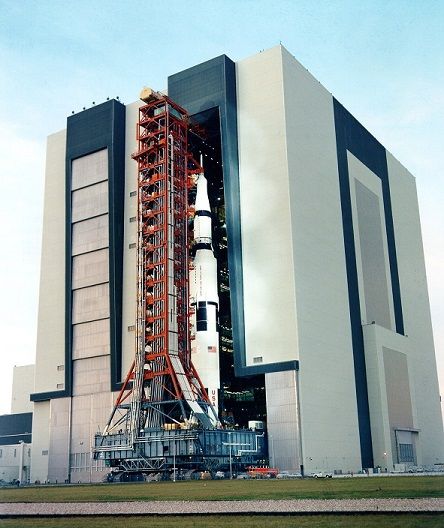The screw-up was that they picked a fuel that's not dense, and thus doesn't have much impulse per volume, and then picked a narrow tank diameter (8.4 meters)
That isn't exactly a screw up--you can't beat LH2 as a fuel. and 8.4 isn't as narrow as Falcon heavt, the EELVs, etc. Delta IV is the narrow beastie. But if you will recall, Ares V was going to be a 10 meter core, before the folks pushing ULA's agenda got it killed.
The Falcon doesn't have to use a large diameter core because it uses a fuel and oxidizer combination that is three times denser than LH2/LOX. An 4.8 meter diameter RP-1/LOX tank can store the same propellant mass as an 8.4 meter LH2/LOX tank of the same height. If you adjust for volumetric specific impulse, RP-1/LOX takes less than half the volume as LH2/LOX for the same delivered impulse.
Still, there is nothing wrong with a tall LV, and two DIRECT-ish Block IA Block II launches will allow for a lunar return--if it is supported.
There is if your rocket is scraping the roof of your building before you've added that little thing called a "useful payload." NASA looked at adding a third stage configuration to the SLS but it wouldn't fit inside the building.
Now I think you might have called for wider LVs (that wouldn't fit in the VAB at any rate.
You do realize that the Space Shuttle had really big wings and a tail, don't you? It was about 24 meters in either dimension on rollout, and they didn't have to saw it in pieces to get it out the door or anything.
Here is a diagram showing how many RL-10s it would take to do the job of the original five F-1s
http://blogs.nasa.gov/J2X/wp-content/uploads/sites/212/2013/08/cluster3.jpg
http://blogs.nasa.gov/J2X/2013/08/06/inside-the-leo-doghouse-rs-25-vs-j-2x/
Now I don't think you want to try that with balloon tank construction.
Why on Earth would anyone but NASA think of using RL-10's on a big vehicle? They're the most expensive engines in terms of $ per thrust ($1,500 per lbf). Even the SSME comes in at about $120 per lbf. An SRB, the F-1, the RS-68, and the Merlin 1-D are in the $14 to $20 range per lbf. A two-stage all RS-25 version of an SLS (about 9 million lbsf at liftoff) would cost about $1.3 billion just for the engines - which are thrown away.
Now I actually don't have a problem with wide vehicles, but that would cost a lot more than SLS right now--and may wind up being a global project. A global-lifter would be something to be planned out 50-100 years from now, with each nation pitching in.
Well, I can see how the SLS's projected launch rate would get you to think in 100-year time frames, but to the rest of us that's like someone in the mid-1800's trying to figure out how to get a paddle-wheel steamer to the moon.
First unmanned test flight of the Saturn V: 1967.
Last lunar landing: 1972.
First planned manned flight of the SLS: 2021?
First planned flight using an engine that's not left over from the Space Shuttle: 2027.
NASA plans to fly one mission per year, with one year being a cargo launch and the other year being a manned launch, with the evolved 130 tonne capability first flying in 2032. People who weren't even born when Obama and Holder canceled Constellation in 2009 will be working as engineers on that mission, employed by managers who weren't born when Bush announced the Constellation program.
I imagine they'll go for a moon landing sometime between 2036 and 2040, which, from the commencement of the program, is the same span as from the attack on Pearl Harbor to Neil Armstrong setting foot on the moon, but without actually inventing a single new engine, much less having to invent jet engines, supersonic flight, rocket engines, staged missiles, and, well, the same freakin' engines they're planning on using for the boosters in the 2030's.
It's called bloat and technological stagnation. Some people cheer it on.



